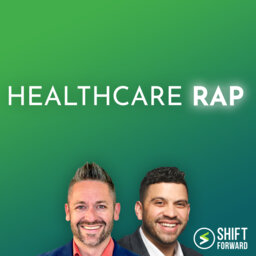Making Brands Competitive In the Modern Marketplace
Healthcare Rap
Healthcare Rap is the leading podcast about consumer-centered care, a.k.a. how the frontiers of digital, retail, and traditional care can work togethe… Why You Must Deliver On the Experience28:25
Why You Must Deliver On the Experience28:25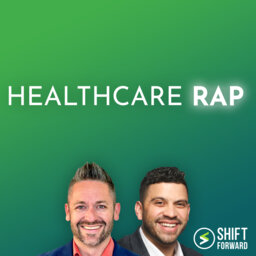 Consumer Experience Success Stories Are Everywhere31:49
Consumer Experience Success Stories Are Everywhere31:49 How to Build Your Consumer Muscles28:38
How to Build Your Consumer Muscles28:38 Pharma’s Piece of the Consumer Puzzle30:56
Pharma’s Piece of the Consumer Puzzle30:56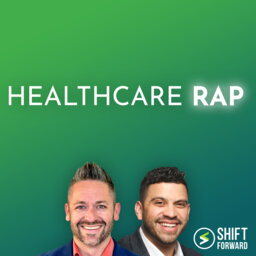 Consumers Want Transparency, Consistency & Simplicity29:52
Consumers Want Transparency, Consistency & Simplicity29:52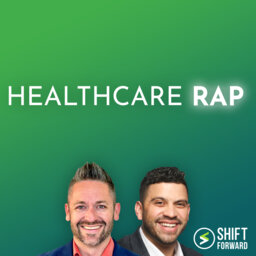 Why Transportation Matters In the Consumer Health Experience29:13
Why Transportation Matters In the Consumer Health Experience29:13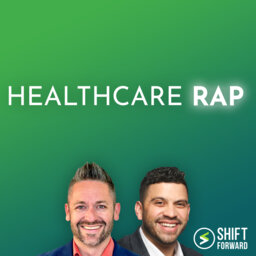 Making Brands Competitive In the Modern Marketplace35:41
Making Brands Competitive In the Modern Marketplace35:41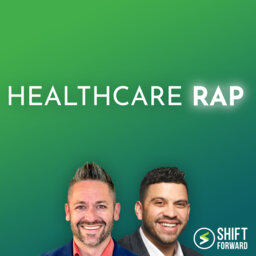 Why Firefly’s Employer Model Is Gaining Traction25:59
Why Firefly’s Employer Model Is Gaining Traction25:59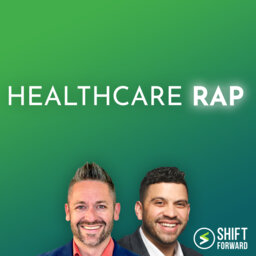 Current Health's CEO On Best Buy’s Care At Home Roadmap32:07
Current Health's CEO On Best Buy’s Care At Home Roadmap32:07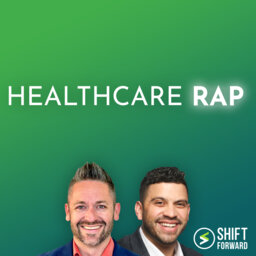 Setting the Table for Consumer Innovation29:53
Setting the Table for Consumer Innovation29:53 Aledade’s $1 Billion in Primary Care Savings27:57
Aledade’s $1 Billion in Primary Care Savings27:57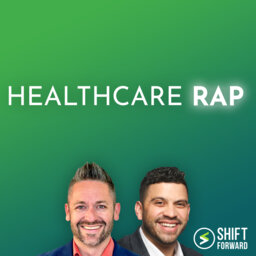 Can Consumers, Medicine & Digital Health Coexist? (#252)33:41
Can Consumers, Medicine & Digital Health Coexist? (#252)33:41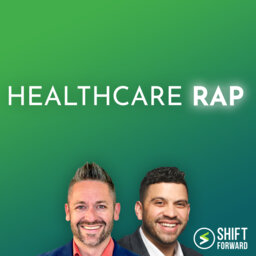 An Inside Look at Epic Cheers32:06
An Inside Look at Epic Cheers32:06
Paul Fahey from Smith & Jones discusses the evolution of healthcare brands as they strive to be competitive in a consumer-first marketplace. Join Paul and host Jared Johnson as they share opportunities for healthcare leaders to evolve the strategy conversation, because we weren’t the ones who created the siloed business systems, we’re still responsible for removing friction and improving those experiences.
All that, plus the Flava of the Week about Walmart Health’s expansion plans. As they accelerate their growth and enter new states in the coming year, how will it impact consumers’ demands for convenience and price transparency, and why is it drawing resistance?
This show is produced by Shift Forward Health, the channel for change makers. Subscribe to Shift Forward Health on your favorite podcast app, and you’ll be subscribed to our entire library of shows. See our full lineup at ShiftForwardHealth.com. One subscription, all the podcasts you need, all for free. (#257)
The show is here. Yo, our mission is clear. It's time to change health care. Have no fear. Today is the date. This is the hour together. You know, we've got the power drop, the silos. We're all the same. Team, patient stocks, nurses, tech and marketing. How can anyone be satisfied with the way things have always been? Yeah, we've tried. So join us now. Join the revolution. Digital health. Is the revolution status quo more like status? No. Yeah. This is the healthcare wrap, y'all. Come on, let's go.
New choices, new platforms, new care models and the health care of tomorrow, consumers win. But who will design it? What will it look like and how long will it take? We are here to answer those questions with some provocative thinking about how to create the health care that people actually want. Ready to roll up your sleeves, Look at the world a little differently and explore the frontiers of consumer health together. Join us. This is the health care wrap. Welcome back. I'm your host, Jared Johnson. And here's what's going to go down today. We have the flavor of the week about Walmart Health's expansion plans as they accelerate their growth and enter new states in the coming year. How will it impact consumers demands for convenience and price transparency? And why is it drawing resistance? I'll talk about that then. I'm pleased to welcome Paul Fahey, vice President at Smith and Jones, to discuss the evolution of health care brands as they strive to be competitive in a consumer first marketplace. Paul shares the opportunity for health care leaders to evolve the strategy conversation because while they may not be the ones who created the siloed business systems, they're still responsible for removing friction and improving those experiences. It's time to dive right in. Are you ready? Let's go.
Flavor of the week.
We're witnessing the evolution of disruptive health care in real time. Not to be outdone by their fellow big retailers, Walmart Health announced that they're nearly doubling in size, opening 28 new locations in 2024. By the end of next year, they'll have more than 75 Walmart health centers across the country. They'll expand their footprint into two new states, including Arizona and Missouri, and deepen their presence in Texas. According to the announcement, the first of the new centers will open in the first quarter of 2024. The specific growth locations include ten locations in the Dallas metro area, eight locations in the Houston metro area, six in Phoenix and four in Kansas City, Missouri. Dr. David Carmouche, Walmart's senior vice president of omnichannel care offerings, expressed what this means to consumers. He said that the announcement reflects the seriousness of our commitment to providing more access to quality care in more communities across the country. Walmart Health provides a unique experience. Our patients receive care when, where and how they want it. We're putting into action what those of us who've experienced health care delivery inside and out have long asked for close quote. Retail health presents an opportunity to bring true consumer centric primary care to consumers whose needs aren't always met by traditional health care services. It's in their DNA to design experiences around consumer's needs. Their goal is to make it easier to access care, know the price and feel human while they're experiencing it. So why does this make people so mad? If Walmart can scale the consumer first experience that they've created at their health clinics, why is anyone throwing a fit? It's the classic scarcity mentality When you put the consumer at the center of the experience, then you see that there's no more room for that kind of thinking. Walmart providing a service to people who already avoid going to the doctor is a good thing. And this is where I need to reiterate that the villain here isn't big retail. It isn't traditional providers, it isn't even health insurance. It's an unhealthy America. It's people not getting the care that they need because the price or the experience pushes them away. There's already too much complexity, there's too much division, there are too many middlemen, there's too many silos. Retail health offers one way around that true consumer first. Health care doesn't add more complexity. By its very nature, it removes friction and barriers. So we celebrate everyone who's making progress with offering consumer first health care in all its forms. Why? Because people just want to be well, we don't want health care. And contrary to the prevailing thought of the last century, people are willing to get care from outside of a doctor's office if that's what meets their needs. Let's acknowledge how Walmart Health's growth can impact consumers choices moving forward. That's another way that we'll build the health care of tomorrow, and that's the flavor of the week.
The flow. The flow. The flow.
All right, everyone, let's get into the flow. Give it up for Paul Fahy. He's vice president at Smith and Jones. We're going to go a few different directions here. But first and foremost, welcome, Paul, to the health care wrap.
Thanks, Joe. Nice to be here.
Let's start off, tell us, what did I miss in your bio? I know there's a lot before that. What else would you like our listeners to know about you and your background?
Right. So this is audio only so they can't see the gray hair and know that I've been doing this for 30 plus years, really on the agency side and largely working with hospitals, health systems. But some interesting work we've done for state associations, the CDC. And a few years ago I was recruited to do a project for the government of Kyrgyzstan as they were shifting into and trying to embrace the American model of democracy. They were also interested in learning more about our health care system and how can they start to mirror what's happening in the United States. But in a place that has tribal districts that transcend government boundaries in five different languages? So it's been an interesting career and I love what I do.
That's amazing. And anything else you can share about that experience in Kyrgyzstan? What a unique opportunity.
It was interesting if you know your geography and I didn't at the time. It's north of Afghanistan, south of Kazakhstan. So it's this mash up of former Russian state heavy Middle Eastern and Afghan influence. But it's also near enough to China that it's got a lot of those intersections of all these different cultures. And it was it was really fascinating. I mean, as diverse as the United States is culturally and geographically in our states and even our different state laws and customs and policies, all of that was transcended by just tribal history. And so how do you build a public health system? How do you get folks, you know, working in that environment, understanding different health care trends, you know, introducing things to different aspects of these cultures? I think the the thing I found the most remarkable was the relationship between your hospitalization and, you know, as you talk about consumerism, the role that the consumer plays in that health care. So unlike the United States and I found this fascinating, say you're admitted to the hospital. You know, Mrs. Fahey, we're bringing your husband, Paul, in here. He's got a little bit of a gallbladder problem. Now we're going to wheel him into the operating room. But in the meantime, while he is in surgery, here's a shopping list for you. And I'd like you to go across the street and get some things we're going to need for this. And it wasn't, you know, the scalpels and anesthesia, but the anything that you might need post-op, you know, while you're still in the hospital and certainly while you're discharged. You know, there was a very interesting dynamic that you'd have to just go across the street. And these are the things my husband will need because he's going to be in the hospital for a couple of days or whatever. I found that fascinating. And when we were in country getting prepared for it, they basically said, you know, listen, you have evacuation insurance. It's very politically stable. They've had some issues over the years. But your hospital or your hotel room will have a gas mask in case you need it. Our Western guests feel better knowing that it's there. It's like, well, my bride doesn't feel better knowing that's there. But but they said there's three things that you need to know and you will be evacuated immediately if you're bitten by a dog, if you develop a cough because there's so prolific over-the-counter antibiotics that they've got these amazing strains of drug resistant bacteria, or if you need a transfusion for blood products, any of those things, Paul, you call the number on the card. We're going to have you airlifted to Germany. So it was an interesting, interesting place to be and really neat to see an emerging government and one that was also emerging as health care infrastructure. It was fascinating. Well, that really is fascinating.
It's a good reminder to me to not take for granted the place where the health care system is in the US and to not get caught up in all the improvements that we still want to see in the progress we want to make, we don't take for granted where we are given the state of the same similar system in other areas of the world. It's always a good reminder.
Yeah, as we have this inside perspective on what the health care system is like. And, you know, we even sort of were joking that you sure you want to copy the United States health care system. You know, there's other countries that we aspire to be like. But it is pretty remarkable. I think we are in a place that that we shouldn't take for granted in terms of the quality of care and the access to care that we've got.
So if you don't mind me asking, what's kind of top of mind these days with either with clients or others you talk to or peers, what are some of the main questions or concerns just floating out there these days?
It's all recruitment and retention. It seems like that's all anybody is talking about, you know, pre-COVID even into 20 or, you know, middle the middle of 2020 folks were kind of staying the course. We had branding projects. We had service lines. We want to promote our bariatric or cancer service lines. We want to make sure we're competitive against other hospitals. And we did some recruitment and retention. We've had some clients that had that as a priority in their marketing budgets, but it was typically because they were in a rural market where it's harder to recruit nurses, for instance, or something like that. But I would say with the last year and a half or so, the shift in budgets. And the shift in the priority for staff recruitment and retention has just been off the charts. It's all anybody seems to be talking about now.
And is that just in their own organization? And I'm just curious, you know, like from a from a marketing or branding standpoint, like what the role in that is and how how it's changed when like, as this has become such a big topic.
I've been at this, you know, since the early 90s and even at that time I was learning that nationwide we've had staffing challenges in health care since the 1930. Actually, it goes back pretty far. You know, what was accelerated over Covid was this era of mass resignation. And frankly, I was very surprised at the health care response to Covid at the time. And my colleagues are fond of pointing out how how wrong I was about it. But at the time, as we were in those early days of Covid, I said, Wow, this is going to be healthcare's 911 moment. I believe that the world and the public will shine a bright light and a point of pride and appreciation for the work that healthcare frontline workers are doing, the same way we did for firefighters after nine over 11. And I was really surprised and maybe I shouldn't have been in hindsight, but you know, the level of burnout, the mass resignation that happened in all industries, really accelerated that challenge of recruitment and retention across all these organizations. And I think it took a while for these hospitals and health systems to regain their financial footing after they had elective procedures put on hold. I mean, there was legislation and rules that said because of Covid these early days, we're going to not able to do some of these procedures. And some of them were very profitable. So, okay, we're finally just getting back on our footing, but we don't have enough staff to be able to go out. I mean, I can't tell you how many of our clients are saying, yeah, we want to you know, we still know that that's a priority service line, but we're just not staffed up for it. We couldn't handle the patient volume even if you brought them in. So it's becoming a challenge. And I think what we're talking about a lot more is, you know, what's the role of the hospital and health system Brand But how do we build an employment brand? How do we, you know, communicate to prospective employees that same set of values and what our culture is all about, that we would communicate almost to prospective patients. So in many ways, we're kind of fighting on multiple fronts. We're still trying to talk about how our hospital might be different from the one across town, but beyond that, from a patient experience, why would you want to leave that hospital and come work here? So that's been a really significant shift. And I think what we've been writing about, we publish an annual trends report and we've written a book also on health care marketing, and it's really been a focus, I think, for us over the last couple of years on our webinars and some of the thought leadership pieces that Lisa and Katie and our team has been putting out. But if you don't.
Mind, let's take those in reverse order a little bit because I'd love to start with the book and just talk about that. So the book was called Under the Influence, correct?
Is that. Yes. So, yeah, this is under the influence. It's the second edition. It's available on Amazon and Audible as read by The voice you're hearing now. The title Under the Influence really speaks to the influence that we as marketers now have that we might not have had as much, you know, decades ago. But we explore, you know, how to treat health care consumers. And in fact, we actually updated this a year ago, I think it was about a year ago that we launched the second edition and it was that post-COVID economy, post-COVID consumers. We've really shifted and accelerated that consumerism. But so how do you treat health care consumers and how does that vary by generation? You know, what's happening at the millennial level versus seniors and the role of, you know, branding, building brand cultures, how to set a game plan or build the marketing plan for your organization. But as I was describing before, what do you do when things don't go according to plan? So it was really a lot of fun to write. I was blessed to have colleagues again. I'll give a shout out to Lisa Brown and Katie Sauce for their help and it was really fun. And you know, my mom in particular is really proud that I've helped co-author a book.
So I think it's more than just your mother here who's who's going to be proud of the insights here, because we are really talking about an evolution of brands and an evolution of the entire thought process and strategy of marketing. And a big part of that has been the consumerization of health. And when you mentioned that that that just has like a downstream trickle down effect to all the individual components of marketing and communications, we really start to realize how big this is. And at the end of the day, anything to do with consumerization. The main premise or theme or action is to simplify the process of engaging with the health care system. So for consumers, how do we remove friction? How do we make things easier at any point? And the great thing is there are so many points that need to be simplified that there's a lot to do and there's plenty of of problems to solve. And there are plenty of entry points and lots of low hanging fruit. And so I think that's, you know, that's one of the benefits is that we're early days and there's a lot of work to do. With that being said, it's also hard to say, like, how do we synthesize that and come up with a strategy? And how do we implement that into some of the branding and marketing that we have going on otherwise? I'm curious what your take on the consumerization of Health is in general and where you think it's going in the next 12 to 18 months? Yeah.
So as I mentioned earlier, my career started I graduated college in the late 80s, early 90s. So I had, you know, a good decade or so under my belt prior to WebMD. So WebMD was really what I saw as that first seismic shift in consumerization. It was that shift in in for lack of a better word, I guess power. You know pre 98 people just came in and they respected that white lab coat and the diploma that was on the wall and said, look, you went to medical school. I didn't. You tell me what's wrong. And and there really wasn't the consumer empowerment that we have today, you know, accelerated over the last couple of years. But it was really interesting to see hospitals and health systems adjust to that at the time. And you still even early 2000, you had the hospitals and health systems and physicians that got it and the ones that didn't get it. And I think they were, you know, realizing how slow they were to adopt this trend. And the physicians that basically said, hey, okay, listen, I'm not offended that you typed in a bunch of symptoms into WebMD and you think you're going to come in and tell me what disease you have and why you need Claritin versus Allegra for your allergies or whatever it could be, because this was the same time that there was also that shift in legislation to direct a consumer advertising for pharmaceuticals. Come back to that in a second, because that was pretty interesting. Both of those things happening at the same time. So you had people typing these things and then there were doctors that would say, okay, great, let me embrace this. This is a tool you're using. And it helped you formulate a set of symptoms and a set of questions. And so as you were presenting yourself, you've already put something into their algorithms and their formulas and it spit out this. Let me see what they came up with. And I know you a little bit differently. I might have asked questions that WebMD didn't, but together, let's find and see if we arrive at the same place. What I found really remarkable was there were also physicians that were offended by that. Like, no, stop, throw that away. Let's just start from the beginning. Tell me what's wrong. Well, what's wrong was just typed on the floor and you threw it away. So that was the first big seismic shift where consumers all of a sudden had a little bit more control and a little bit more power. And that was happening outside of health care. Also, you had that in real estate. You had that legal services, all these positions that were very revered, but also a little bit unapproachable now, had a lot of consumer influence, you know, hence this under the influence title of our book. So I saw that shift and we've weathered that, you know, over the last couple decades. And, you know, we sort of were percolating along, but over the last 3 or 4 years. Well, let me go back to that pharmaceutical thing, because that was happening at the same time also. And it was really interesting. The pharmaceutical companies lobbied Congress to say, we want to be able to speak directly to consumers and tell them about our products so they can make informed choices. And the examples they gave were, you know, those, you know, more well known disease states. It was cardiac, it was cancer, it was whatever else it is. And within about 18 to 24 months after that legislation was passed, you know, the top selling drugs were for erectile dysfunction and runny noses. And so it was really interesting to see, you know, again, that was the big shift in consumerism. People were going in saying, I want this medication. And 67% of the time, according to surveys at the time, they were leaving either with that prescription or something very close to it, Their physicians were willing to grant that, you know, because of the sake of the relationship, consumers were coming in pre diagnosed by formulas and the algorithms within WebMD. And so that's what's carried us over the last 20 years or so. Enter Covid and Covid at the same time. Now we've got these high deductible plans. Now consumers have two decades of empowerment under their belt and now they're being cost conscious. You know, you've got this very individual approach to it. People are wondering what things are going to cost. They're asking for and demanding transparency in that process. And there's a really famous clip out on the Internet, YouTube somewhere, Sam Walton talking about this, I think back in 92, saying that health care is really the only place where you can go and, you know, incur a significant amount of expense with absolutely no sense of what things are going to cost as you're going through that whole process. And that's not just for emergency care when you're, you know, wheeled and unconscious. And that's a lot of what's fueling that mindset 30 years ago is what's fueling a lot of that consumerism today. I mean, certainly the empowerment. But as we see Walmart stepping in and Amazon and CVS and Walgreens and Dollar General, you know, stepping in, these are brands and consumer experiences that are just going all in on health care and really revolutionizing not only, you know, embracing cost conscious consumers. You know, they have a way of managing consumers that. Hospitals and health systems, even if they were enlightened enough to be able to embrace this or woefully undercapitalized. You know, I think about CVS's $8 billion acquisition last year to acquire Signify health and its 10,000 clinicians and I think, oh, $8 billion. That's maybe double the annual loss of a major metropolitan hospital in every market across the country. You know, so these sort of whimsical acquisitions are held by comparison to what's happening in the hospital panels and their balance sheets. So it's really been what I've seen over the last couple of years accelerated remarkably. I feel like WebMD and pharmaceuticals were a bit of a blip. But the last couple of years, seeing these retail giants stepping in, seeing consumers get even more cost conscious and cost empowered, and even the acceleration of telehealth just because of Covid, I think is is a great thing, especially for rural health. I think that's brought a lot of health equity and access. I think all of that's here to stay. I think it's going to mature over the next couple of years. I don't know that anything's really going to gain a lot of traction. I think the remarkable thing about this is that as well positioned as, say, Amazon and Walmart are nationally, they still have to navigate state by state unique regulations. You know, New York is a certificate of need state. You can't just open up a cardiac cath lab without, you know, understanding and, you know, getting approval. So it'll be interesting to see. I don't see them accelerating. I think it's going to take a decade for them to be as deeply entrenched as they want to be. But we'll see. It's really been a remarkable time to be in health care, that's for sure. Right.
Like you said, I don't know if anyone can truly accurately predict who's going to be on the top of the leaderboard in terms of some of the disruptors, especially on the retail side. And I'm not sure how much we need to worry about is it going to be Amazon, is it going to be CVS? It's going to be Walgreens. The point is that together collectively, they are changing the narrative and the branding and positioning of health care and it's happening outside of traditional health care settings. I point to a lot of disruptors out there. And a few months ago I did a little bit of an analysis. I was just taking screenshots of a lot of the folks, everyone from one medical to VillageMD to Oak Street to Chen Med to nice health care, to a lot of these different types dispatch health and just looking at the messaging. And it was pretty starkly positioned against traditional health care. I mean their their ads, they just say things like like finally a doctor dedicated to your long term health, how health care should be doctors who actually listen, you don't have to lift a finger. You know, like the types of messages that are being portrayed out there are implying really subtly and some not as subtly that this is going to be easier for you than a lot of health care encounters you've had in the past. And they're speaking directly to consumers and the the language that's being used is so non-clinical it almost takes you back if you've been living in that world and have had to use words like multidisciplinary and, you know, comprehensive care care continuum where the rank and file, you know, normal layperson out there on the street isn't going to even relate to a lot of those words. And yet we have a habit that's hard to break, rightfully so, of not using clinical terms in non-clinical settings. And so I think all that kind of combines to say like, first and foremost, this isn't just to understand what competitive threats are out there, but like our disruptors who use messaging like that, are they kind of setting expectations differently? And is that going to change what people expect? Does that lead more people to change providers? I mean, there's some early data on all of that, and it's just a trend that I haven't heard much about until, again, I started looking and really looking at like what those messages are like. What's the impact of some of those disruptors and retailers coming in the space From a marketing standpoint.
Your description of that is spot on. We have a formal focus group facility and it was more used pre-COVID than it is today. But it's, you know, you can picture it in your mind's eye. It's the conference room with the mirror and the viewing room in the back with stadium seating. And we've moderated more than 500 focus groups in the last, say, 15 years. And I was surprised early on and got really used to talking with consumers about these kind of things. When I ask them, you know, when you compare one hospital to another, you know what matters to you. And the first unaided responses where the conversation goes first are all those bedside manner, timely access to appointments, spend time with me, treat me like a person. ET cetera. I have to probe at the end of that conversation for, Hey, what about doctors? You know, from the best institutions in. And what about the latest technology? And they're like, Oh, yeah, Well, I assume you have that, don't you? So I think your description earlier was spot on. The fact that Amazon and Walmart are embracing those aspects of consumerism. What consumers want is spot on. You know, some hospitals and health systems are taking on things like valet parking and Starbucks publishing apps with wait times in hospitals. I mean, they're getting there. But this is certainly, you know, everything that the consumer wants and demands, you know, everywhere else in their world. And, you know, it's up to health care to adopt that pretty quickly. To your question about where does marketing come in on that, I think recognizing that at the core of that health consumerism is that need to communicate to the individual, you know, and certainly that has a place in the broader advertising messages. You know, that speaks to a testimonial strategy of talking with other people in my community, real people, not stock photos, but I think also reaching people at the individual level, finding HIPAA compliant email solutions that allow you to go out without the click to portal kind of options. And they're out there, you know, that allow you to reach people with marketing driven messages. I mean, the thing that's really amazing about health care is it's data rich. And part of the reason that I see Amazon and Walmart and everybody else attracted is they're really good at managing data and really good at cross-selling and upselling. And health care is getting there. There's a lot of, you know, integrated systems that speak to our ERPs, but as marketers, we've just been so hyper hesitant that we don't explore the options to really customize and individualize the message and really reach people not only based on their disease state or their personal interests, but then also reaching them with those, as you were describing earlier, those consumer level messages that really matter. I think that's where, you know, if I were a marketer listening to this and hello to you that are that I think would be a priority for the coming year, developing those email automation campaigns that are sent through encrypted, horrific technologies. I would put that as one of my priorities for 2023 for sure. Yeah.
I would second that. This has to do with perception. How do we change the perception of the work that you're doing to improve and make things easier, less costly, You name it. What are you doing? Let's let's actually tweak the messaging to do that. And and it was interesting just to see that reaction because I think a lot of us actually would have that reaction if you just start seeing a lot of them back to back to back and sequence and you just think, yeah, like that's they're not the only ones who who are trying to make things convenient. They're not the only ones with doctors who care. Like that's just silly, you know, like they don't need to say that. And yet that's what's out there.
Right? Right, exactly. If you're still going out with messages that will treat you like family and our doctors care 37% more, you're missing the boat. I think you've got to dig deeper into into what they're looking for. And really make no mistake that the health care consumers are still going to be creating that pressure. Feels like we've got it certainly more under control now than we did exactly three years ago to the day almost. But I can't believe Jerome Powell, Fed chair, hasn't declared a recession. You know, I think it's only because we continue to add jobs. That's the only variable that that doesn't, you know, check that box. But consumers are still suffering from inflation. We've got higher interest rates. We've got these financial pressures. And again, you know, when it comes to our health care, these high deductible plans. So take all the empowerment consumers have had and this continuing financial pressure, it's going to drive them to brands that wait for it, always low prices. And that's the promise that Walmart has had. And it'll be really interesting to see if they and Amazon can deliver the quality clinical experience. I think that's where there's still a little bit of hesitancy from the consumer. I'll let you go just so far before I need to get into a hospital. So, you know, to your question about that next couple of years, I think the the current economy is going to still empower consumers to drive this. But I think there's also an opportunity for hospitals and health systems to embrace, you know, these organizations when Walmart and CVS and Walgreens and Amazon all start coming in with primary care services, with diagnostic services, with simple procedures, you know, it's another point of erosion for the things that hospitals had done 20, 30 years ago. But at the same time, let the hospitals specialize in the things that they specialize in. And I think there's an opportunity to like we were advising clients 20 years ago, 20 plus years ago when WebMD came in, except the fact that you're never going to be able to outgun these organizations, you know, they're going to be in your market before you know it, find a way to embrace it, shift, you know, the services that you're providing and get ready to sort of meet them, meet them where they're at, meet them, accept the fact that they're going to be a reality rather than trying to go head to head against them for sure. In our book, the. Log for a book under the influence. We took a quote from Tim O'Brien's novel Going after Coquito, and it was this novel about, and from his experience, the writer's experience in the Vietnam War. And I'll just read a couple sentences from it, he said, And we use this quote to really set the context for what was happening in health care and what we saw in those earlier days of Covid. The facts, even when beat it on a chain, still did not have real order events, did not flow. The facts were separate and haphazard and random even as they happened. Episodic, broken, no smooth transition, no sense of events unfolding from prior events. And that quote, as I read it, you know, in that book, again, it was, you know, sort of battlefields of Vietnam was the context for that novel. But I thought, my gosh, this really speaks to everything that was happening acutely, maybe two years ago in those earliest days of Covid. But it really captures the essence of what's happening around us. I mean, I think these hospital administrators really have a lot to think about, is they're dealing with their workforce and their reimbursement rates and this, you know, changing the phrase you used earlier, these disruptors, It's really a remarkable time to be in health care. I think there's a lot of opportunities for health care leaders and learn from those lessons. And those early days of that can shift to consumerism driven by, you know, WebMD and direct to consumer advertising.
I agree. I agree. I think the place where the rubber hits the road now is consumers see the difference between that brand promise from a hospital and their own experience or the experience of their loved ones. And they see that. And there's some cognitive dissonance there now. And maybe it was just like, well, hey, this how I experience all of health care. And so we just have to accept it. But these days that's not the case. You can go to a value based primary care, membership based practice. You can be a one medical member. You know, there are so many different options that that's not the case. And so when people say, wait, that was easier for you, then loyalty starts to erode and it isn't enough to put out all those those same messages that create a brand promise of, like you said, we're taking care of you. Our doctors care more. Our doctors are clinically have more clinical quality. That only goes so far and it goes a lot less than we used to take for granted. And from the consumer's perspective, the more we incorporate that perspective into any marketing strategy, I feel like that's where we're better off. And that's kind of the one of those consumer muscles, if you will, that that we have the opportunity and the responsibility to build right now, which is it's true. You know, if you're in a marketing or digital team, you probably didn't create the business systems that make the experience somewhat challenging to some people. But you are responsible to communicate and to remove as much friction as you can from those systems and maybe even improve the experience. So it's just recognizing that and that is a shift in how we've approached everything really for the last couple of decades, but it's also the opportunity in front of us.
So yeah, the essence of what you're describing is, is branding. And I think the hospitals are already entrenched. They already have that local authority. They have their community based programming and their local relationships, and sometimes they're the largest employers in the county. So there's that neighbors taking care of neighbors. They're deeply entrenched and they have that local advantage. I think it's just a matter of, you know, accepting and understanding not only the shift in consumerism that we've been talking about, but understanding where these disruptors are coming. But I think it's at the end of the day, the brand equity that they've built up from their presence in the community. And some of these organizations have been around, you know, hundreds and hundreds of years. By comparison, you know, Wal or Amazon is pretty immature, at least in terms of its chronological comparison. But yeah, I think the brand essence and that's what you know, again, I think the other thing I would pay attention to if I was a marketer hospital health system would be that that branding think that branding and direct consumer individualization through email automation and communication, I think would be two of my highest priorities for this year.
Where do you hope this all takes us? In other words, give us a reality check. Like what kind of progress do you think we can realistically expect when it comes to the consumerization of health in the short term, like the next 2 to 3 years? What do you think is possible? Where do you hope this gets us?
Yeah, on the 2 to 3 year timeline, my prediction and I'll come back and listen to this in this episode in particular 2 to 3 years to see if I was right. I think it still needs to mature. I think the state by state policies are going to really hinder the growth as much as Covid accelerated a lot, telemedicine, whatever it is. I think the ability for these organizations to compete at the bricks and mortar level in these communities, consumers are still going to be, you know, as influential as, you know, and have that empowerment. That's not going to change and the economy is not going to rebound rapidly. So they're still going to be demanding lower prices and cost transparency. The consumer is still going to be where they are. I think it's going to take a while for the disruptors to mature. I think the next couple of years will just be a slow evolution. But like the parallels I'm seeing with, you know, electric. Vehicles, automated driving. I think all these things just need to mature a little bit. The 2 to 3 year timeline, I don't think it will be as remarkable. But you know, with any luck, I'll sunset my career in about ten years and I think you'll see a lot of those disruptors well entrenched in communities for sure. So that's my prediction.
Right. Well, Paul, I want to thank you again and you've given our listeners so much to think about. That's a wrap for this episode. I've had the pleasure of speaking with Paul Fahy from Smith and Jones. Thanks so much for joining us today.
Thank you, Jared. My pleasure.
Thanks for tuning in. If you like what you heard, please spread the word. Tell your colleagues to tune in for all the awesomeness, then leave a review on Apple, Spotify or wherever you listen. This show is produced by Shift Forward Health The Channel for Change Makers. Subscribe to Shift Forward Health on your favorite podcast app and you'll be subscribed to our entire library of shows. See our full lineup at Shift Forward Health one subscription all the podcasts you need and it's all for free. And remember, we might have a lot of work to do in health care, but we'll get there faster together. Thanks again.
 Shift Forward Health
Shift Forward Health